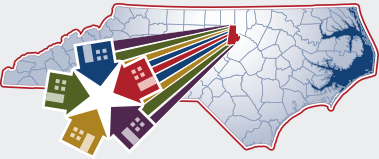HCV HQS Inspections Checklist
The nine areas that will be reviewed for Housing Quality Standards (HQS) are:
- Living Room
- Kitchen
- Bathroom
- Other rooms used for living
- Secondary Rooms (not used for living)
- Building Exterior
- Heating and Plumbing
- General Health and Safety
- Paint Condition
The list below shows the items involved in the HQS inspection of a unit/property. All Owners should carefully review the checklist before their scheduled inspection date. DHA will not enter into a HAP Contract with the Owner until the unit passes an HQS Inspection.
- All ceilings, walls and floors must be strong, sturdy and in their permanent positions.
- A working smoke detector with a live battery must be installed on every level of the unit, including the basement and outside of sleeping rooms. If any members of the family are hearing-impaired, a detector with a visual signal must be installed.
- The entire unit, both inside and outside, including window frames must be free of cracking, scaling, peeling, chipping and loose paint. This prevents exposure to possible lead-based paints.
- Where there are four or more consecutive steps, handrails must be securely attached. This applies to both the interior and exterior of the unit.
- The unit must be free of roaches, rodents or any other infestation.
- The entire unit, interior and exterior must be free from electrical hazards. There may be no loose, hanging or exposed wires. All three-prong outlets must be wired correctly. A three-prong circuit tester will be used at the time of the inspection ensure safety.
- Every room used for living must have either two working outlets or one working outlet and a permanently installed light fixture. At a minimum, each bathroom must have a permanently installed light fixture.
- All light switches and outlets must have secured plate covers installed.
- All windows and doors must be secured when closed, and must be weather-tight.
- The dwelling unit must have screens in all windows designed to be operable.
- The dwelling unit must have storm windows in all windows designed to be operable.
- Occupancy permits are required in some communities. Check with the City Hall in the Durham municipality.
- The dwelling must have gutters and downspouts.
- The dwelling unit must have storm doors (unless part of historical preservation).
- All windows and doors that are accessible from the outside must have working, sturdy locks.
- All operable windows must have a mechanism to secure them in place when opened.
- Every window designed to open, must open.
- If the unit has a third floor sleeping room(s), and the family is eligible to use this room for sleeping, the Owner must provide a safe method of escape in the case of fire, e.g., chain ladder.
- If there is a bathroom with a toilet that is not hooked up to water and sewer lines, it must be repaired or removed. If it is removed, the drain must be sealed to prevent rodents and/or sewer gasses from escaping into the unit. The fixtures in the bathroom must not leak.
- The bathroom must have an operable window or an exhaust fan for ventilation.
- The pressure relieve valve on the hot water tank must have a discharge line extending down to six inches from the floor.
- Flue pipes leading from the furnace and hot water tank must be sealed where they enter the chimney. The flue pipe must be angled upward to where it enters the chimney.
- Every room used for living must have an adequate heat source. If the source is a separate gas heater, it must be vented to the outside. If the source is electric, it must be permanently installed and controlled by a separate thermostat.
- If the downspouts or gutters are damaged and/or missing, causing interior damage to the unit, they must be replaced or repaired. Any damage to the interior of the unit due to the missing or damaged downspouts or gutters must be repaired.
- The unit must be free from any accumulation of garbage or debris, both inside and outside.
- The Owner must provide "refuse disposal". These facilities include trash cans with covers, garbage chutes, dumpsters with lids and trash bags if they are the type approved by the local Health and Sanitation Department.
- If the unit has a clothes dryer, the dryer must have a vent to the outside.
- All utilities must be on and operable at the time of inspection.
- All vehicles on the property must have current tags/plates.
- The address must be listed on the property at the main entrance to the dwelling.
Housing Choice Vouchers (HCV)
Family Obligations for HCVFrequently Asked Questions about HCVHCV HQS Inspections ChecklistLandlordsPayment StandardsRent Affordability CalculatorThe Housing Choice Voucher TriangleUtilities Allowance - Duke PowerUtilities Allowance - Piedmont ElectricWaitlist Lottery InformationWaitlists Available


